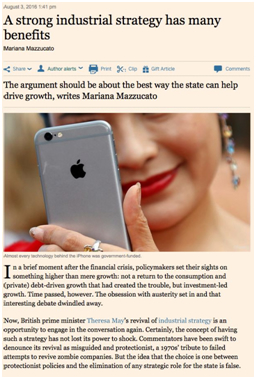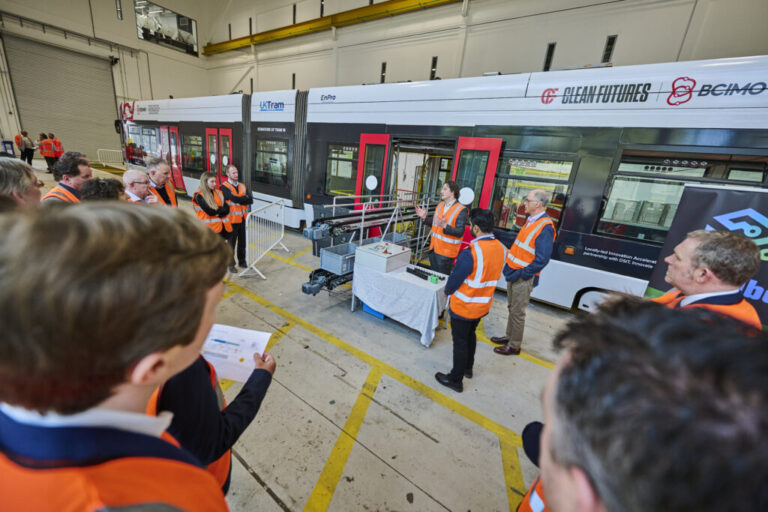by Andrew Sleigh, Chair BSC Chief Technology Officers Group
This is a somewhat expanded version of the introduction I gave at the Birmingham Science City CTO Group breakfast meeting on 13th September. The aim is to provide some initial ideas to stimulate discussion about what an Industrial Strategy should mean for the West Midlands.
One of Theresa May’s more interesting recent announcements was the need for an Industrial Strategy. So far, there has only been limited discussion by government or the media about what this might mean. The first meeting of “Cabinet Committee on Economy and Industrial Strategy”, chaired by the PM, indicates the objectives as being:
- Part of the aspiration to “deliver an economy that works for all”
- As “arresting a decades-long decline in Britain’s manufacturing sector by helping firms tackle the challenges posed by globalisation without blunting the market forces that make them competitive”,
- And “playing to the country’s strengths while also creating an economy that is open to new industries, particularly those that will shape our lives in the future”.
So what might this actually entail, what should it mean for the West Midlands (a region with diverse, globally competitive manufacturing strengths), and what can we do to steer it in the most effective direction?
To prise open this argument, I highlight four items that have been published over the summer:
- An article in the FT by Professor Marianna Muzzacato “A strong industrial strategy has many benefits”.
- The EEF article “What Next for Britain and the EU” and their campaign concerning Industrial Strategy.
- NESTA “Back to the future: Industrial Strategy in 2016”
- The draft Greater Birmingham and Solihull LEP “Strategic Economic Plan 2016-2030”
FT ARTICLE
Professor Muzzacato’s article makes the case for the state to engage in new types of public-private partnerships, to work together to solve problems across sectors with public agencies. She argues against the 1970’s approach of reviving zombie companies, or incumbent companies winning unwarranted favours with government, or the state trying to drive growth, but by mission oriented investments in partnership with the private sector. She argues these are more effective than instruments such as tax credits and subsidies. As in her book, her thesis is governments should act in an entrepreneurial way in partnership with the private sector, providing the demand-led investment and impetus for cross-disciplinary innovation (she used the iPhone as an example).
EEF
The EEF, “The Manufacturers Organisation”, as expected has a wide range of material on its website relevant to an industrial strategy, but so far does not have specific policy recommendations. It sets out generic principles, much directed at future trading relationships post Brexit, and has a campaign page specifically dedicated to industrial strategy. These highlight easy access to international markets, skills development and reducing the costs of doing business, but the EEF recommends ‘grandfathering’ the most current EU legislation and regulation into any future UK scheme.
One of the more interesting aspects exposed is the importance of embracing 4IR, the 4th Industrial Revolution, essentially the deep integration of digital and cyber technologies into all aspects of manufactured products. Indeed, what we mean by manufacturing is broadening with service-based contractual arrangements, 3D printing and products providing platforms for an eco-system of Apps offering additional features.
What is clear is that the EEF has an important place in this debate, and we should track and contribute to its thinking.


NESTA
NESTA has a wide range of relevant material, including papers on the importance of innovation in promoting growth, the collaborative economy, and has recently added a page on Industrial Strategy. This echoes the government statements, but adds the importance of a sophisticated understanding of the strengths and future direction of the UK economy, seeking the creation of a ‘strategic brain’ at the heart of government, the need to take a long term view of how we replace declining sectors with new opportunities and the skills that go with them, and also the opportunity to excite the public about innovation, with an honest discussion about the risks and drawbacks as well as benefits. NESTA will be looking at the big questions around Industrial Strategy, and this must be an important activity to watch.
GBSLEP SEP
Closer to home the GBSLEP Strategic Economic Plan sets out a number of objectives that look like a sound basis for an Industrial Strategy for the wider West Midlands Region. It is significant that the first priority in the economic plan is “To be a world leader in innovation and creativity”.
The strategy emphasises stimulating demand-led innovation by developing a supportive environment bringing together the innovator, entrepreneur, universities, science parks, large companies and public sector organisations. This focus on enabling demand to interact imaginatively and constructively with innovators is potentially a very powerful model. It speaks to a Midland Engine investment fund, supporting scale-up programmes, developing mid-sized business support, attracting foreign investment to key growth and regeneration opportunities. It aims to enhance cultural and creative assets.


WHERE FROM HERE?
Greg Clarke (SoS for BEIS) gave a speech to the IoD on 27th September outlining the government’s thinking on Industrial Strategy. This adds substance to the objectives, but still says little about the actual measures to be implemented. He speaks of the need for a long term approach to tax, infrastructure, research, education and skills, avoiding race to the bottom. He advocates a tax system that encourages entrepreneurship. He notes the need to support the integrated supply chain of smaller, specialist firms, not be the protector of incumbency but create the open conditions for new competitors. Many policies will be cross-cutting, not about particular industries or sectors. And he emphasises the need for a different approach in different places, no one size fits all. From my perspective, this is all helpful sounding positioning. The question is, should steps be taken locally and nationally to realise these ambitions.
I hope this blog can initiate a focused dialogue on what we think should be the actual implementable planks for an Industrial Strategy for the West Midlands. We have a strong, globally integrated manufacturing capability with much potential for growth. The proposals set out by the GBS LEP look a reasonable basis, but is it complete and what can we do to bring this to reality?
Some questions to consider include:
- What is meant by ‘industry’ and by ‘manufacturing’? Most products now involve a substantial digital element that plays across service-based offerings where so much value generation can lie. With so much activity outsourced on a services basis, ‘industry’ has tentacles well beyond normal sector definitions.
- How can demand-led innovation and ‘the entrepreneurial state’ be realised, how can we bring about the public-private innovation Professor Muzzacato argues for, or the cross-cutting creative partnerships the GBS LEP is suggesting?
- Does manufacturing include business that design and develop IP in the UK, has production abroad, but still generates its value added in the UK?
- Large companies, mid-cap businesses and SMEs have different needs, but it is clear they have strong inter-dependencies on each other. What elements of strategy will help generate these relationships and enable them to flourish?
- Complex supply chains feature in much advanced business activity, especially in the West Midlands. What elements of an Industrial Strategy can support supply chain growth, locally, in relationships with EU business, and globally?
- Most high volume products are made in a very small number of huge plants, where the benefit of high investment and concentrated accumulation of skills is what drives globalisation rather than low wage rates. Will we see manufacturing bifurcate into such high volume global centres on the one hand, with more complex, flexible production on the other? Can the UK play a part in both?
- If the part of the objective is to promote the “everyone” agenda, then how does that square up with advanced manufacturing, which is notable for its small employment footprint?





